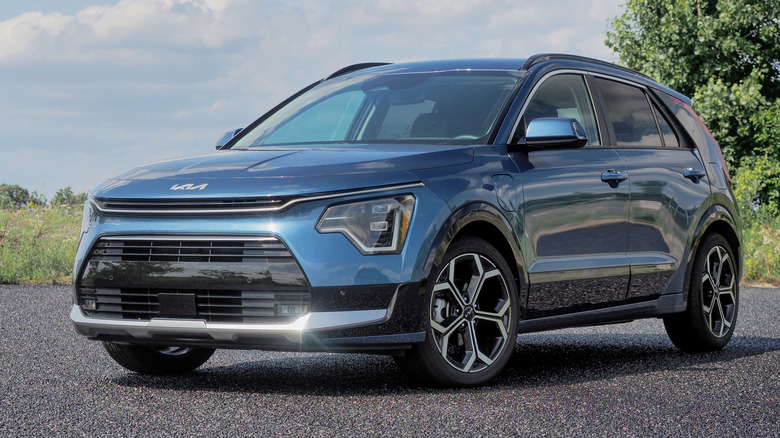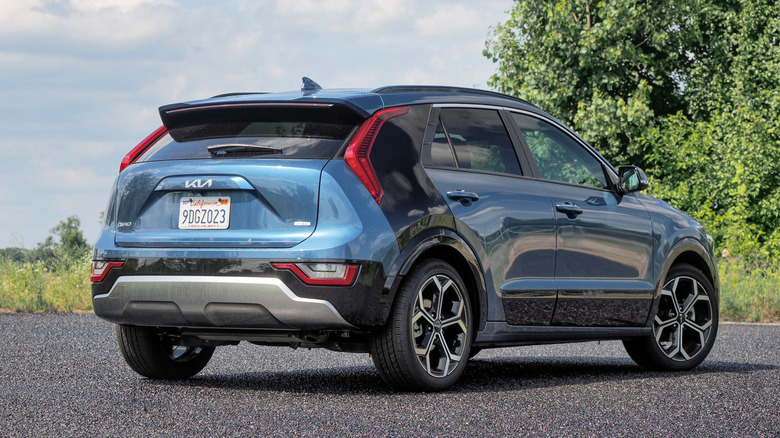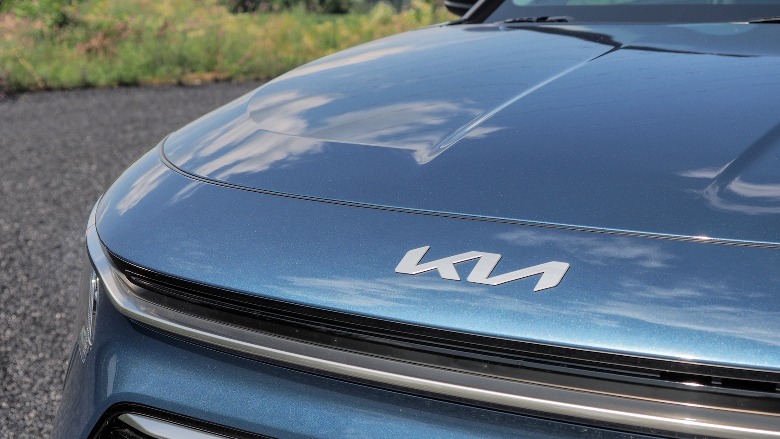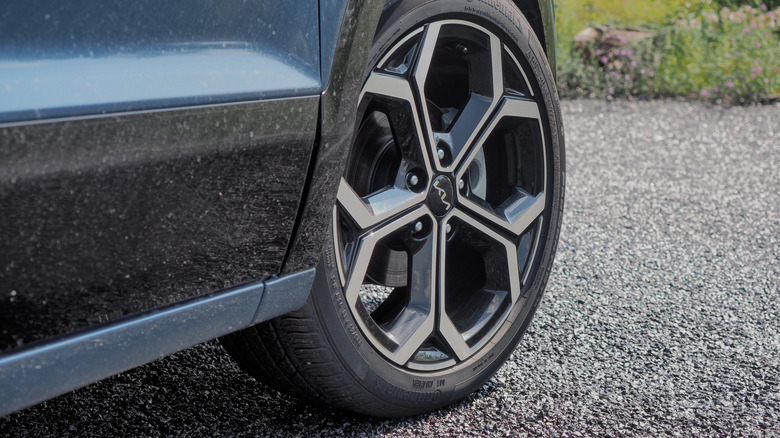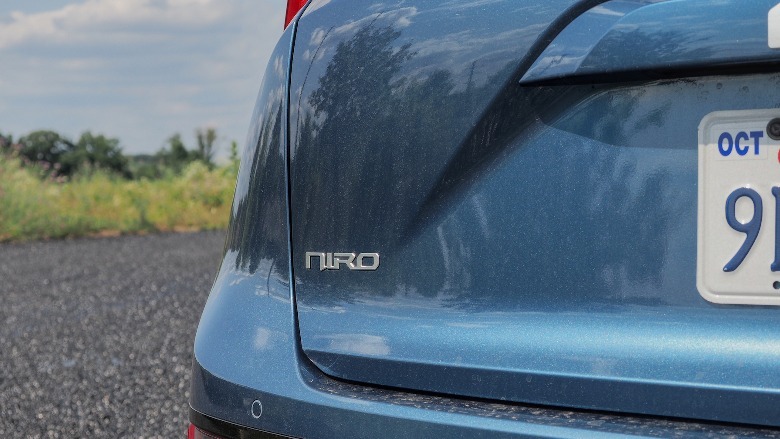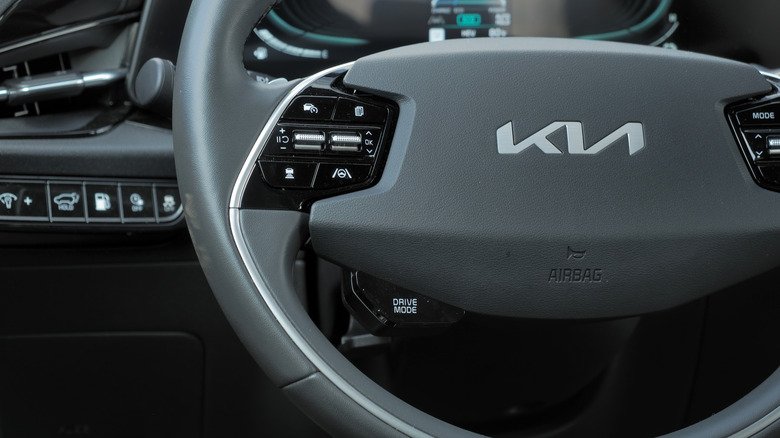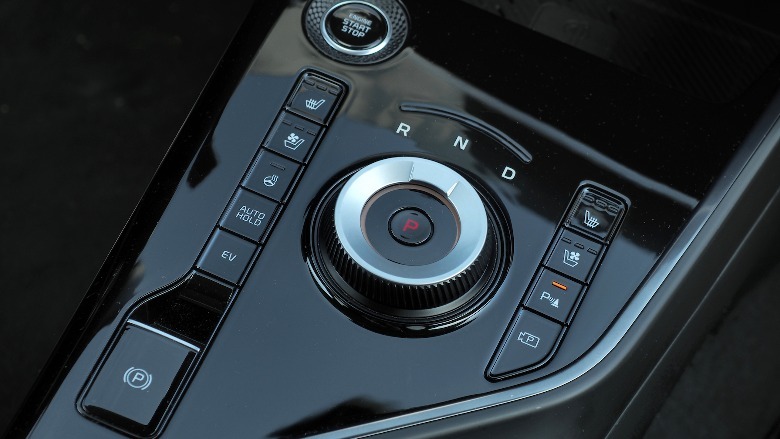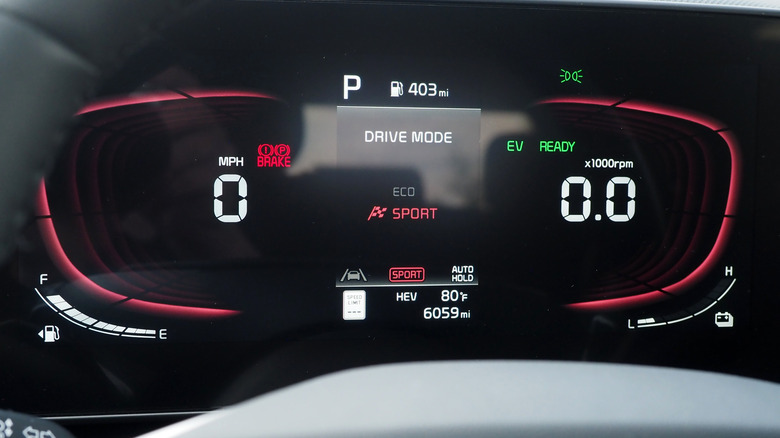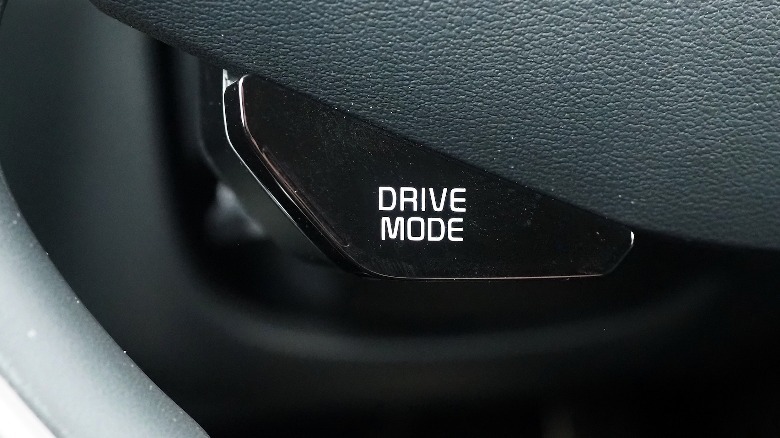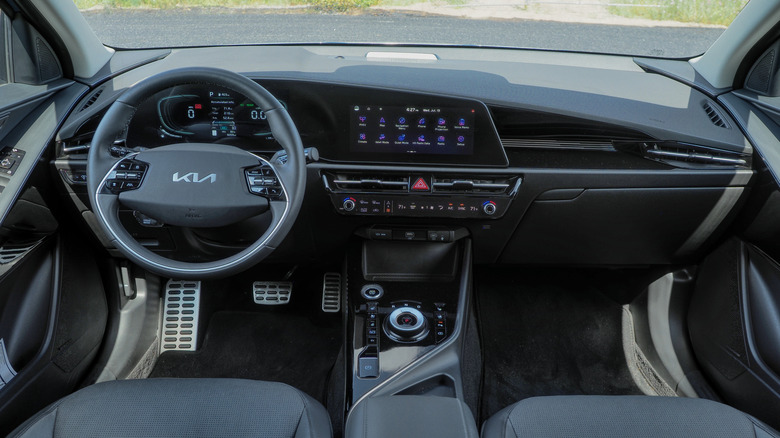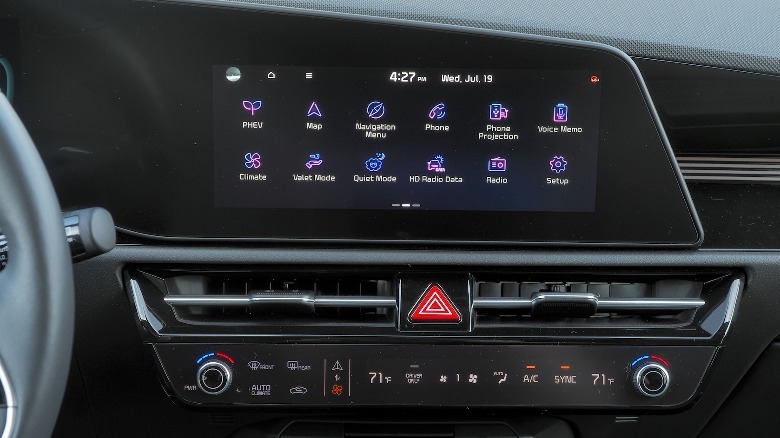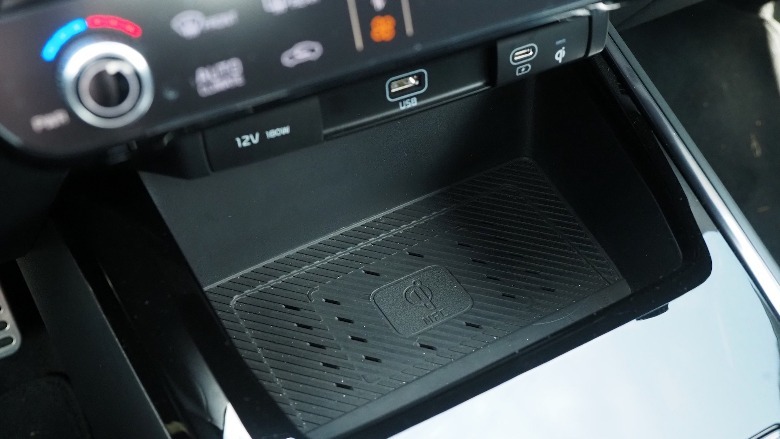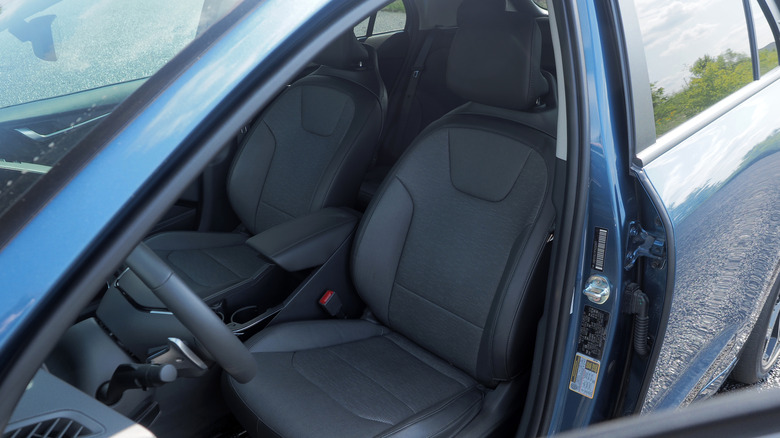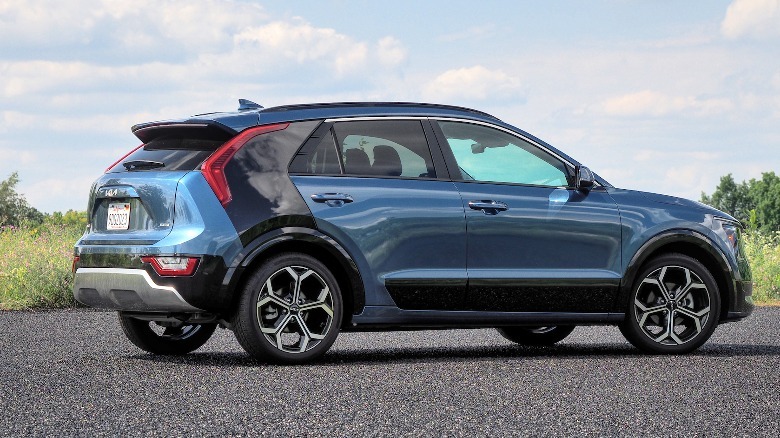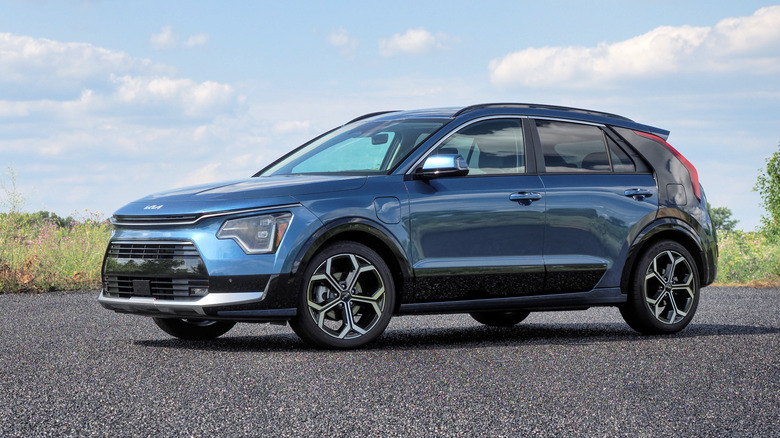2023 Kia Niro PHEV Review: Going Electric, Gradually
- Handsome styling doesn't compromise on practicality
- Plug-in hybrid drivetrain is flexible and perky
- High levels of standard equipment
- Excellent warranty
- Lacks a little refinement when pushed
- Significant price premium over mild-hybrid Niro
- Some dashboard controls are fiddly
The plug-in hybrid is the unsung hero of the path to electrification. Yes, most automakers have pledged vocally to a fully-electric future, but industry ambition isn't necessarily reflected by driver intent. The convenience and familiarity of gas stations, plus the price premium battery electric vehicles still command, means internal combustion isn't going anywhere for a while.
The 2023 Kia Niro PHEV doesn't want to convince you otherwise. Instead, its plug-in hybrid drivetrain aims to play nice with whatever your electric comfort levels might be right now. Charge it up, and there's around 34 miles of EV range to play with: almost enough, notably, to cover the daily miles driven by the average U.S. driver.
Skip the charger, however, and Kia's frugal gas engine will keep you moving. With pricing kicking off at $33,840 (plus $1,295 destination) for the EX, or $39,490 (plus destination) for the SX Touring trim you see here, the best of both worlds needn't break the bank, either.
A handy hatchback
Kia's chunky two-tone aesthetic looks good to my eyes. This SX Touring trim — one of only two offered in the Niro's PHEV form — gets a mixture of sparkly and satin finish chrome, LED fog lamps to go with the distinctive daytime running lights, and 18-inch, machine-finished alloy wheels instead of the standard 16-inch versions. It's worth noting that the charming contrast D-pillar is only offered with certain main paint colors.
Though dressed up in crossover threads, the Niro really is more of a hatchback. That's not a bad thing: it's compact enough to make threading through urban traffic — and into parking spaces — straightforward. The 22.8 cubic-feet of cargo space with the rear seats up (and almost 64 cubic-feet with them down) is practical — and, courtesy of a relatively low load floor, easy to access.
Interior space is decent, too. The only real limiting factor for adults is likely to be rear seat legroom, depending on how far back the front seats are pushed. Headroom is fine for four adults.
Three flavors of Niro
The whole Niro range is now electrified in some way, and this plug-in hybrid (PHEV) slots right in at the middle. Like the Niro hybrid — the cheapest of the three, from $26,590 plus destination — there's a gas engine under the hood, specifically a 1.6-liter four-cylinder. The most expensive Niro EV does away with that altogether, in favor of a fully-electric motor. All three are front-wheel drive; if you want the rear wheels to be driven too, you'll need to step up to something like the Kia EV6.
Kia pairs the gas engine with a single electric motor and a small lithium-ion polymer battery. It's only 11.1 kWh, good for an EPA-reported 34 miles of electric-only range. Throw in the gas tank, and the Niro PHEV's 48 mpg combined economy rating from the internal-combustion engine alone, and you're looking at 510 miles of range with everything topped off.
That's not bad at all for a vehicle this size, and neither are the estimated cost savings. Based on the EPA's assumption that the typical driver goes 15,000 miles annually, it says you could save $4,250 in fuel costs over five years, compared to the average new vehicle.
Charge at home, gas up on the go
To hit the maximum fuel savings, though, you'll need to be charging the Niro PHEV regularly. Kia includes a portable charging cable, but it's only a 110V unit: many other EVs and hybrids now come with a dual-voltage version that can plug into 240V outlets, and thus charge at faster, Level 2 speeds. Of course, if you have the space for it, you're best off installing a proper Level 2 charger, which can fully top up the battery in under three hours.
There's no DC fast charging support — as with most, but not all plug-in hybrids — so don't expect to stop off at an Electrify America station and plug in. Of course, the idea is that if you're low on overall range while on the road, you can simply call in at a gas station. There's an argument to be made that PHEVs are a better option than EVs for a lot of drivers, simply because of that flexibility.
Kia's 2023 Niro hybrid makes a similar pitch without the plug-in part. It has a smaller battery, though while horsepower is down compared to the PHEV (180 horsepower in the plug-in, versus 139 horsepower in the mild hybrid), the 195 pound-feet of torque is the same. There's no pure electric mode in the mild hybrid, but its 49-53 mpg combined economy rating is impressive for a car you only have to worry about filling up with gas. The Niro PHEV, mind, has a 108 MPGe combined rating (i.e. taking into account both gas and electric).
Zippy enough
If you have a place to charge, then undoubtedly, the plug-in hybrid version of the Niro has the capability of being more cost-efficient. At the same time, you do pay more for that flexibility. This top-spec SX Touring trim has a $4,700 premium for the PHEV, versus the regular hybrid.
The extra pep might be worth it, though. While the plug-in hybrid isn't as zippy as the fully-electric Niro EV — which brings 201 horsepower and 188 pound-feet of torque to the party, delivering all its torque instantly — there's still more than enough to go whooshing around town without issues. Curiously, Kia only offers two drive modes, Eco and Sport, but the former doesn't feel unduly constrained as it can in other frugal cars.
Switching to Sport isn't going to light any fires, but I can't say I'm disappointed with the Niro's feel behind the wheel generally. A particularly pleasing discovery is the six-speed automatic transmission, in place of the far-more-common continuously variable transmission (CVT) typically used in hybrids. Again, it's never going to be confused for a sports gearbox, but it doesn't slush or whine like so many CVTs do. You even get paddles on the steering wheel if you want to overrule things yourself.
Two well-equipped trims
The Niro's cabin isn't just spacious, it's cleanly designed and — in SX Touring trim, anyway — well-equipped. My primary complaint is too much piano black plastic, which shows smudges, fingerprints, and dust like little else. Kia does, at least, throw in some interesting ambient light effects, and while the plastics aren't going to impress anyone from the luxe set, it all feels well-made, and the switchgear in particular is reassuringly solid.
The 10.25-inch center touchscreen is standard, with wired Apple CarPlay and Android Auto, navigation on both EX and SX Touring trims, a wireless phone charger, power driver's seat, and front seat heating. Dual-zone climate control is standard on both trims, too — operated by Kia's mildly annoying dual-mode HVAC and media control panel. You flip between the two sets of controls with a touch-sensitive button that's aggravatingly small, and has no textural distinction to it.
Better is Kia's selection of USB ports: Two USB-A and a USB-C up front, and two USB-A in the back (complete with some clever positioning). There's also a 12V outlet in the front. The SynTex seat fabric isn't going to be confused for real leather, but that's fine for this segment and the price tag.
Plenty of active safety tech, too
SX Touring trim throws in front seat ventilation, which is a nice addition, and a heated steering wheel. It also gets a better audio system from Harman Kardon. A Cold Weather Package adds rear seat heating and a more potent electric cabin heater to both trims, and the heated steering wheel to the EX trim.
On the safety and driver-assistance side, both Niro PHEV trims get Kia's Highway Driving Assist, which combines adaptive cruise control with lane-centering. It's a hands-on system, so don't expect to be able to let go of the wheel as you might with Ford's BlueCruise, but it's smooth and reliable, without the jerky inputs that some rival versions suffer.
Blind spot warnings, rear cross-traffic collision avoidance assistance, lane keeping and following assist, and enhanced automatic emergency braking with junction turning detection are all standard. So are rear parking sensors, and the SX Touring adds front sensors, too.
2023 Kia Niro PHEV Verdict
Kia's warranty coverage adds some reassurance. There's a 5 year/60,000 mile limited basic warranty, with matching roadside assistance. The powertrain and the battery each get their own coverage, however — a healthy 10 year/100,000 mile warranty. Considering the complexity of a plug-in hybrid system, and the fact that many potential EV drivers are still put off by fears at how resilient the tech will end up being, that's a good sign of confidence from Kia.
Indeed, confident seems to describe the 2023 Niro PHEV well. Like all recent plug-in hybrids, its biggest strength is in how straightforward it makes "going electric": a reasonable EV range, but with the reassurance of gas station convenience. You could even — though you'd be foolish to — ignore the plug-in aspect for the most part, and simply get decent economy as the Niro recaptures energy with its mild recuperative braking.
Those already onboard the EV train should probably look to the 2023 Niro EV, too. Kia's decision not to offer an all-wheel drive PHEV does feel like a missed opportunity. Nonetheless, it's hard to argue with the 2023 Niro PHEV's combination of frugality, style, high levels of equipment, and convenience.
